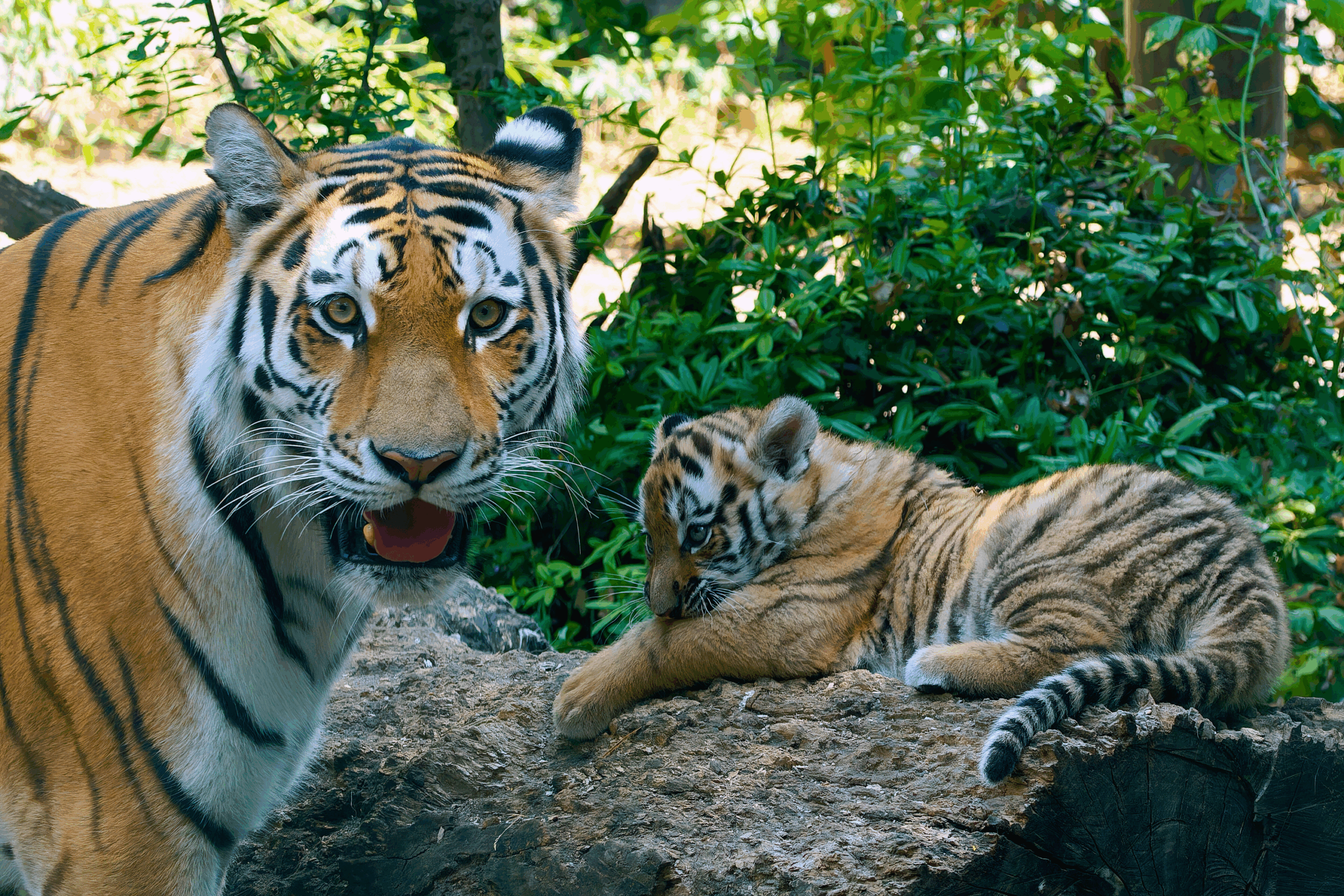After a long hiatus, tiger cubs have once again been born at the Budapest Zoo. On this occasion, let us take a look at the history of tigers at the Zoo, with a special focus on the currently exhibited Siberian subspecies.

The first tigers arrived at the Zoo ten years after its opening, in 1876. That was the year the first big cat house was completed, designed by Alajos Hauszmann. To mark the occasion, Count Elemér Batthyány generously donated two tigers from his estate in Ikervár (Vas County) to the City Park animal collection. It is assumed that these individuals belonged to the Bengal subspecies.
The female tiger purchased in 1925, named Caesarina, also belonged to the Bengal subspecies. A year later, a male named Emir joined her. The pair had six litters of cubs, the last in 1934. At that time, zoos did not yet place much emphasis on breeding subspecies separately, so Emir also fathered cubs with another female named Saxa, who was not Bengal but rather a Javan tiger, also known as a Sunda tiger. One of Emir and Saxa’s offspring was even transferred to the Schönbrunn Zoo in Vienna.
Between 1935 and 1937, all three tigers unfortunately died, leaving the Zoo without any tigers. This situation was quickly remedied by the arrival of a female named Luna, the first representative of the Siberian subspecies in the Zoo’s history. By 1940, several tigers lived in the big cat house, and that same year a litter was born. Due to the mother’s milk drying up, the cubs were nursed by a female Kuvasz dog, though not with great enthusiasm.
During World War II, a female Bengal tiger named Fatime lived in the Zoo. In her memory, another female tiger, also named Fatime, was acquired from the Netherlands in 1950. Her mate was named Bengal, although they both belonged to the much rarer Javan subspecies rather than the more common Bengal. Their last cub, born in 1959 and named Nahar, was not nursed by the mother and had to be hand-reared. He was a gentle, mild-mannered tiger who lived until 1967. In the early 1980s, the Javan tiger was declared extinct, so Nahar was likely one of the last individuals of his subspecies.
From the 1960s onward, Bengal tigers once again lived at the Budapest Zoo—initially just a large male, and later a breeding pair. They produced multiple litters, and their cubs served as valuable exchange animals for acquiring other species. From 1971, for a short period, the public could see representatives of two tiger subspecies: alongside the Bengals, two young female Siberian tigers also arrived. They were eight months old, and in accordance with the practices of the time, their keepers would enter the enclosure and even train them to perform tricks, which they showcased to visitors in the former Zoo Kindergarten area.
Over nearly 150 years, tiger enclosures have undergone many changes at the Zoo. After the first big cat house was demolished, the tigers were at one point housed in a lion cave built into the Great Rock. A poster design by Aladár Fáy from the late 1920s depicts Emir behind the bars of a vaulted cage in the new big cat house (now the India House). In the early 1970s, two much larger cages were built for the Siberian tigers, each with a bathing pool, as tigers—despite being cats—are particularly fond of water.
Since then, the Budapest Zoo has focused exclusively on keeping and breeding the Siberian subspecies. This tiger is classified as critically endangered. The wild population, consisting of only a few hundred individuals, is smaller than the total number kept in zoos worldwide. Their natural range extends from Russia into northern China, where traditional folk medicine attributes healing powers to every part of the tiger, prompting poachers to ignore international protections. An even greater threat is the drastic decline in prey species. In the absence of natural prey, tigers often hunt stray dogs, which can transmit deadly diseases such as canine distemper.
Moreover, predators born in captivity do not learn the skills needed for hunting. Since they do learn to associate humans with food, reintroducing them into the wild could eventually lead to conflicts with local populations. For this reason, zoo populations primarily serve a gene preservation role—functioning as a modern Noah’s Ark—rather than as sources for reintroduction. Another advantage of the Siberian subspecies is its adaptability to cold climates: it actually thrives in snowy environments.
The two females, Bolygó and Luna, shared a mate (bigamy is acceptable among tigers), a one-and-a-half-year-old male named Achill. This trio produced a total of 24 cubs by the late 1980s, significantly contributing to the zoo-based population of Siberian tigers. After that, however, breeding success declined. A later pair, Jeroska and Nahar, had two litters, but from 1992 to 2011, no tiger cubs were born at the Zoo—even though the former iron-barred cages had been replaced with a modern, plant-filled enclosure with a pool and waterfall.
The long-awaited breakthrough came with Norbi, who arrived in 2004, and Niva, who joined him in 2010. They had two litters, in 2011 and 2013. However, to prevent overrepresentation of their genes within the breeding program, they could not continue breeding. Once their lives came to an end, new opportunities opened for tiger reproduction with a young breeding pair: Agnes, from the Czech Republic, and Darius (called Igor by his keepers and friends), born in Debrecen. After several years without births, since late April 2025, visitors can once again follow the growth of two striped cubs at the Budapest Zoo.
If you’d like to learn more about our tigers, look for the latest issue of Állatvilág magazine!